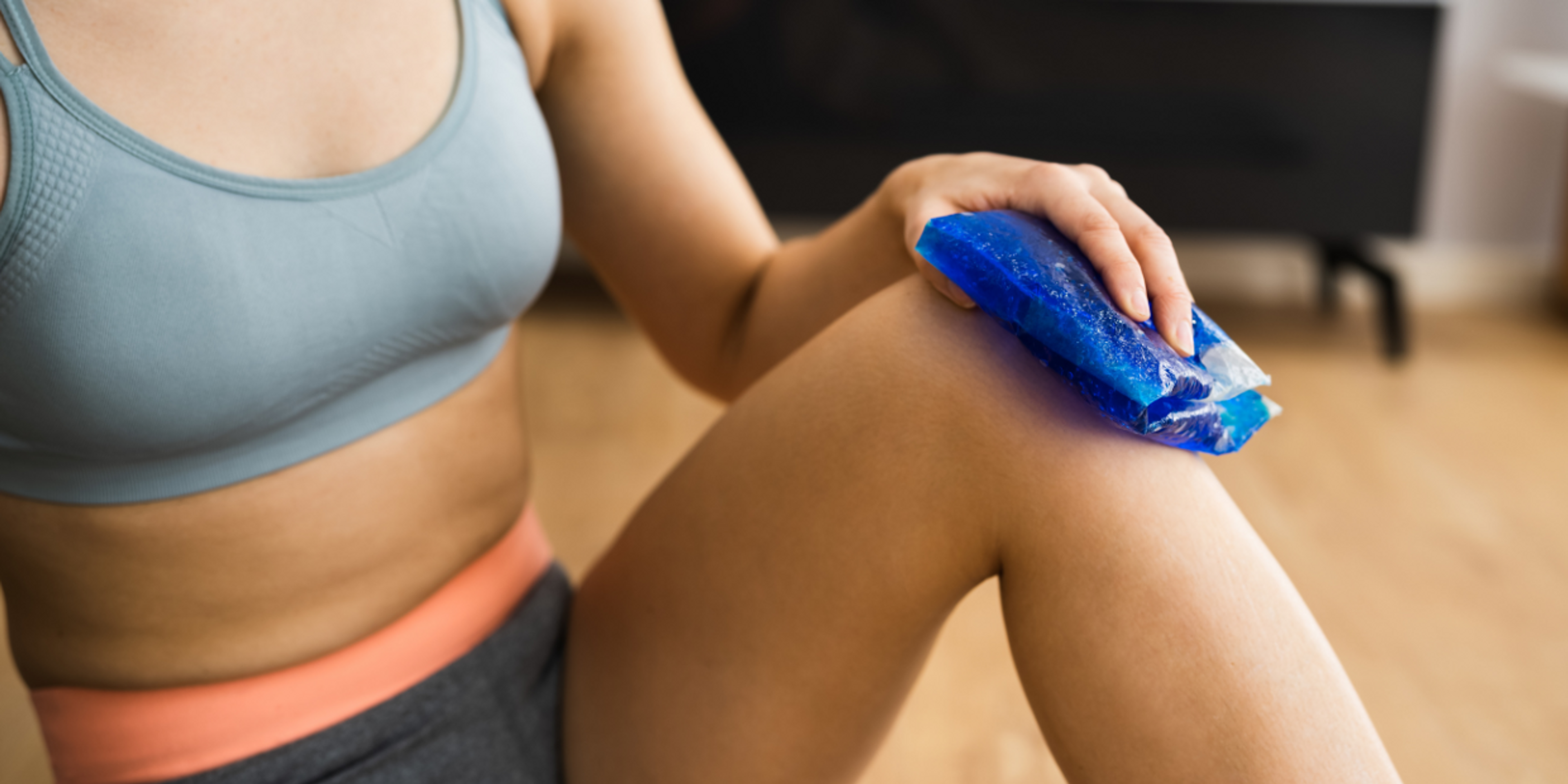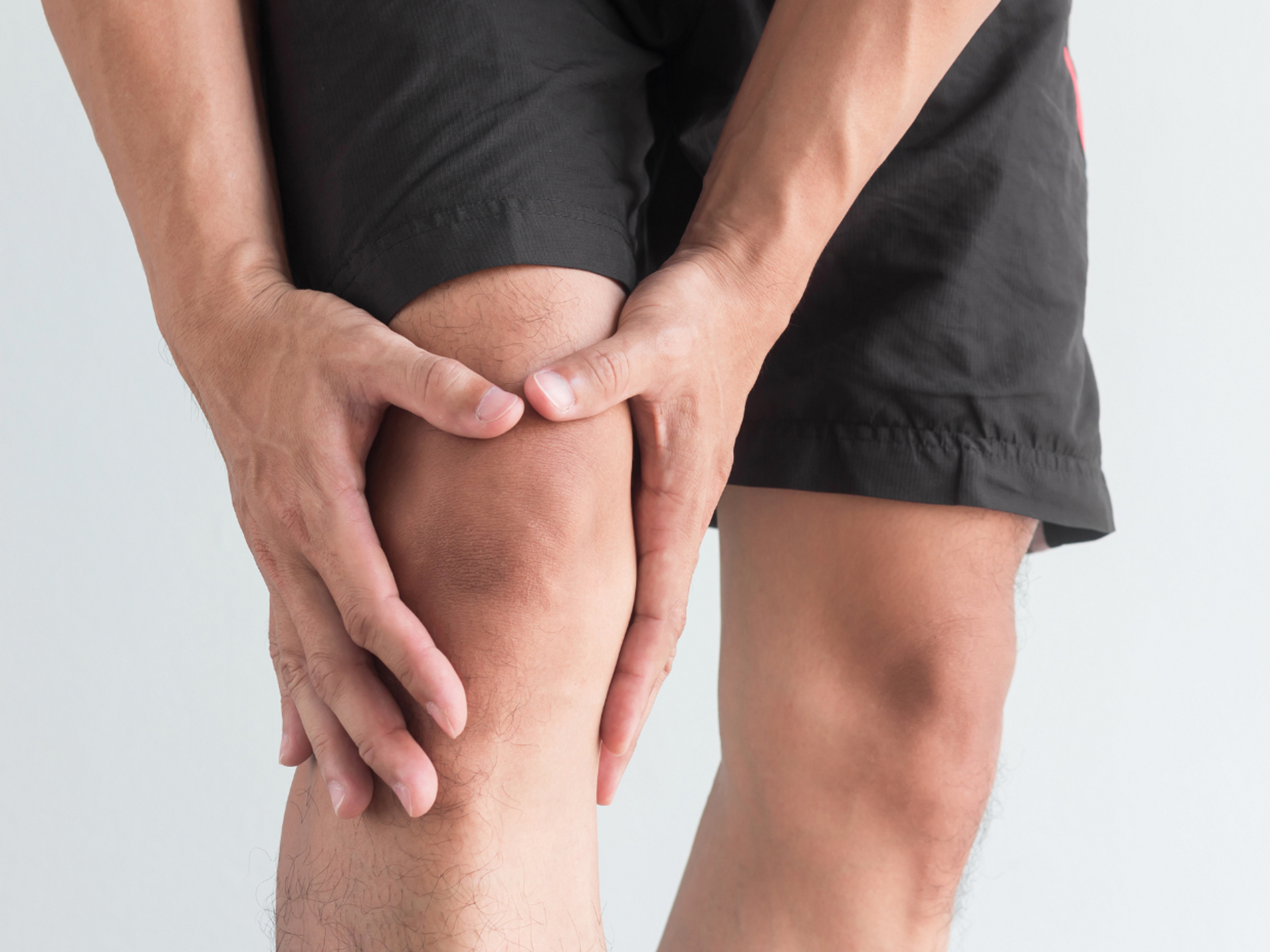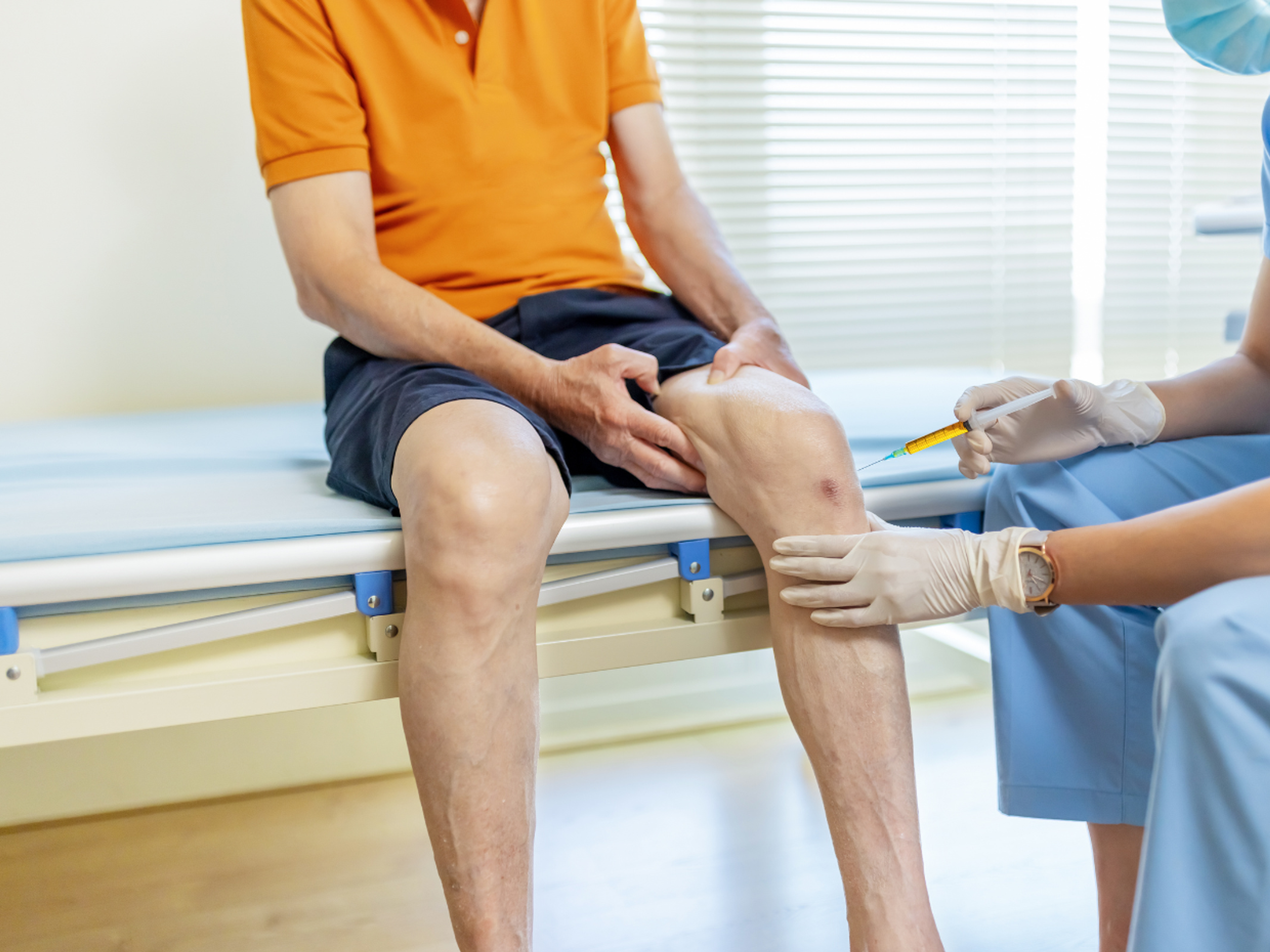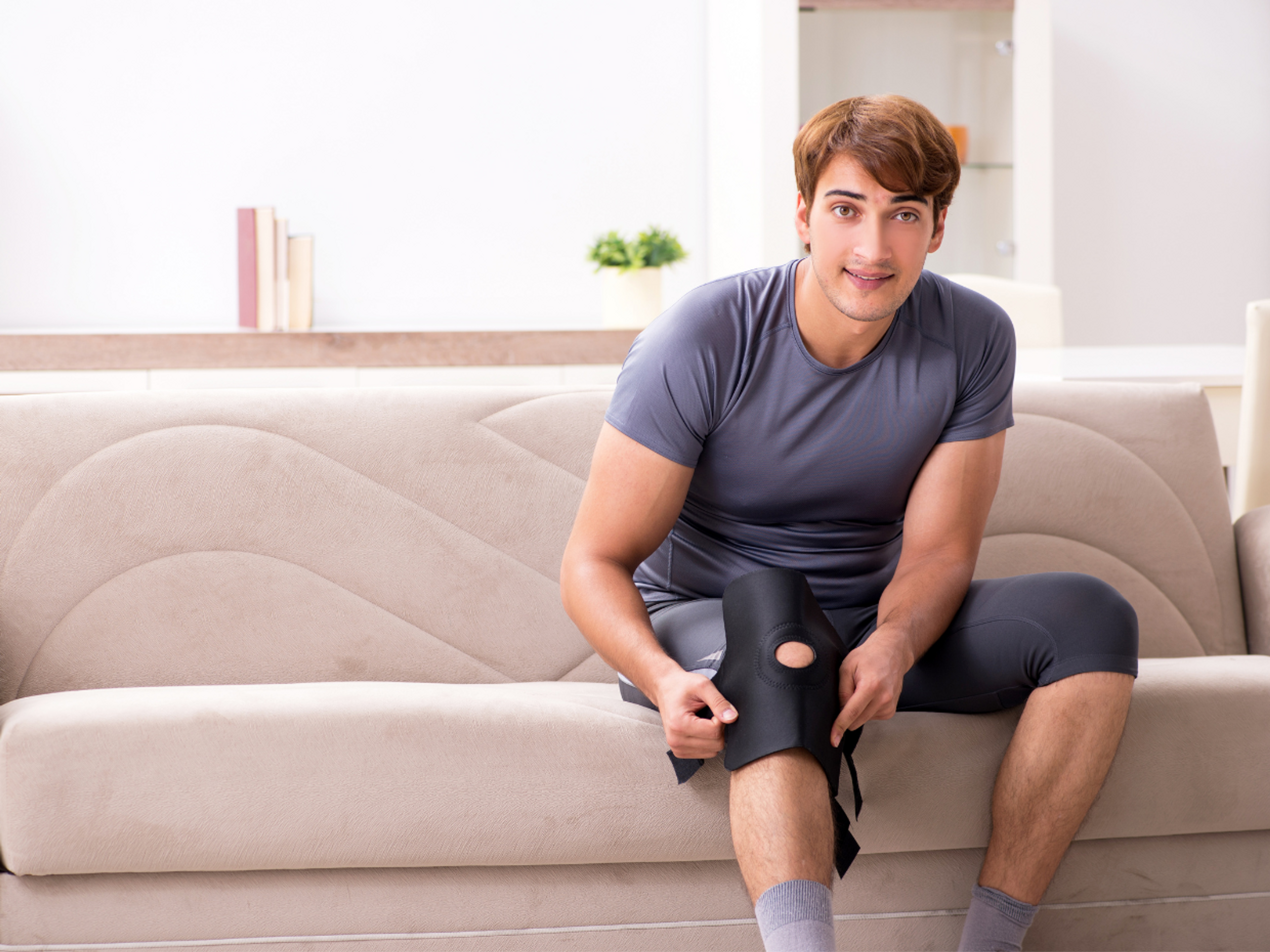Exercises for a sprained knee – What, when, and why?
To understand why we recommend the exercises in this article for sprained knees, it's helpful to first look at what structures are typically injured when you sprain your knee.
What happens when you sprain your knee?
When you sprain your knee, you usually injure more than just one structure. You may:
- Bruise the cartilage,
- Over-stretch the ligaments,
- Pull a muscle,
- Or even tear your meniscus.
Most sprained knees will have some swelling, but the amount will vary depending on what structures you've injured.
You'll likely have minor swelling if you've only injured the muscles and ligaments outside the knee joint. If you've injured any structures inside the knee joint (e.g., cartilage, cruciate ligaments, meniscus), you'll likely have quite a bit of swelling.
How long does a sprained knee take to heal?
The typical healing times for sprained knees (to get back to full activity or sport) are:
- 8 to 12 weeks for mild sprains without significant ligament or meniscus damage
- 12 to 16 weeks for moderate knee sprains that caused significant ligament damage or meniscus tears
- More than 16 weeks if you've injured the joint cartilage or bone or completely ruptured a ligament.
What is the best treatment for a sprained knee?
Knee sprain treatments
Knee sprain treatments vary depending on the structures you've injured, but in general, you want to:
- Protect the injured structures and give them time to settle and repair. The best way to do this is by limiting your activity and movements to what you can do with minimal discomfort (about 3 out of 10 on the pain scale). You may benefit from crutches if your knee is painful and swollen.
- But keep moving - resting too much and keeping your knee too still will often make it feel worse and can delay healing. Find more information on why this is below. The exercises in this article are perfect for those early days when your knee is still sore and painful.
- Use ice to reduce pain and swelling when needed, but try to avoid anti-inflammatory medication as it may interfere with healing. Learn how to use ice correctly in our article about using the PRICE method to treat injuries.
- Perform exercises that activate and strengthen the muscles around your knee. These will help stabilize the knee joint and reduce the load that goes through it.
- Include balancing exercises to restore your brain's ability to control your knee correctly when you move.
- Taping your knee can help reduce swelling and pain.
- Use knee braces if your sprained knee resulted in a cruciate ligament or significant medial or lateral collateral ligament injury. Some cases of meniscus tears can also benefit from wearing a knee brace.
Why is movement crucial for sprained knees?
Your knee joint doesn't have arteries or veins going into it. It relies 100% on the changes in pressure caused by movement to get fluid, nutrients, and oxygen in and out of the joint.
So, by doing gentle movements, you can help your knee get rid of the swelling while increasing the nutrients and oxygen available for healing.
If you keep your knee dead still, the swelling will accumulate, and your knee may feel more painful.
Have you ever noticed how a painful joint can feel at its worst when you wake up or try to get up from sitting still for a long time and try to move? Then, after 3 or 4 repetitions of a movement, it feels looser and more comfortable. That's because you've helped the joint get rid of the swelling and waste products that accumulated while you weren't moving.
What are muscle activation exercises, and why are they important?
The muscles surrounding your knee (mainly the quads and hamstrings) provide support and stability to your knee joint.
Research has shown that when a knee is painful and swollen, these muscles become less active and don't work as well. This can make your sprained knee feel unstable and as if it wants to give way, even if your injury isn't severe.
The good news is that it's pretty easy to wake these muscles up and get them working better. Any exercise where you contract your muscle helps to wake up the nerve endings and activate it.
The best type of muscle activation exercises for sprained knees is isometric exercises (where you maintain the contraction for several seconds) performed in positions that don't strain the knee.
Top 3 exercises for a sprained knee
Important
When to start this exercise: Usually from day 2 after injury
Why do it? The gentle movement will help your knee joint to get rid of the swelling, reduce your pain, help feed your joint, and improve your range of motion.
How often? You can do this exercise 2 to 3 times a day.
When to start this exercise: From day 3 post-injury
Why do it? This exercise will activate your quad muscles and help to improve your knee's ability to straighten fully. As a result, your knee will feel more stable when you walk.
How often? You can do it 1 to 2 times per day.
When to start this exercise: From day 3 post-injury
Why do it? This exercise activates your hamstring and gluteal muscles, improving your stability.
How often? You can do it 1 to 2 times per day.
Knee sprain exercises for runners
If you're a runner, our rehab plans in the Exakt Health app can help you recover and get back to running more quickly after a knee sprain. Or, if you're looking to prevent knee sprains while running, our running injury prevention plan will be helpful.
The app currently has a rehab plan for meniscus tears and patellofemoral pain syndrome (kneecap pain). Let us know if your knee sprain resulted in a different knee injury.







